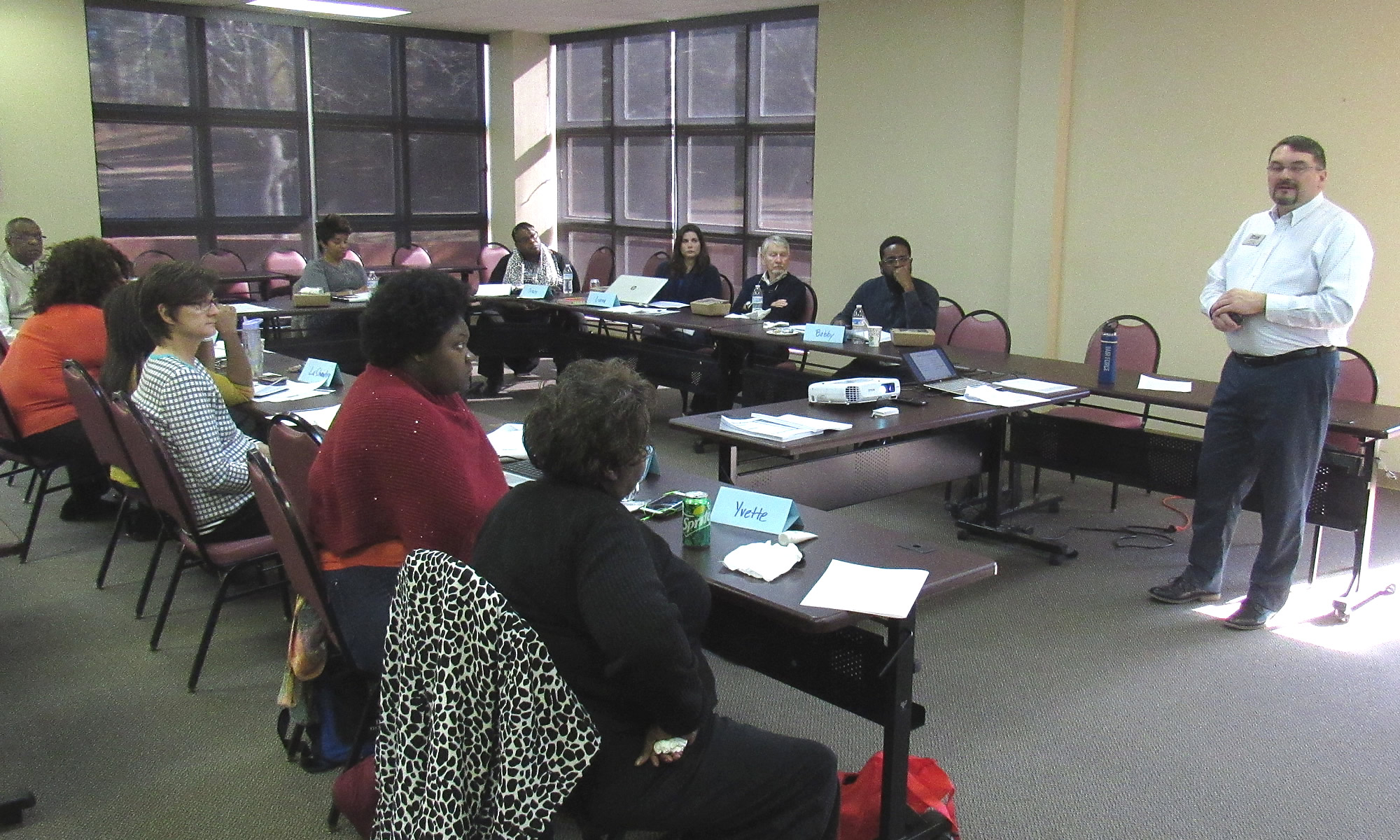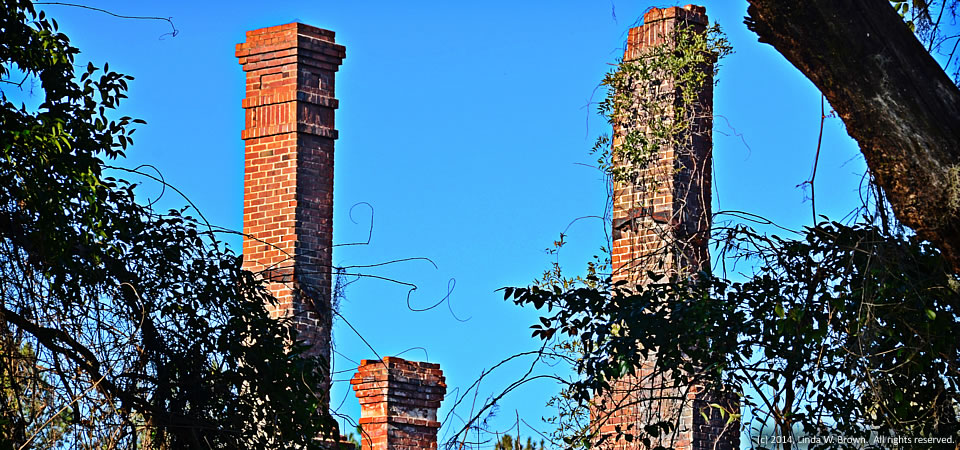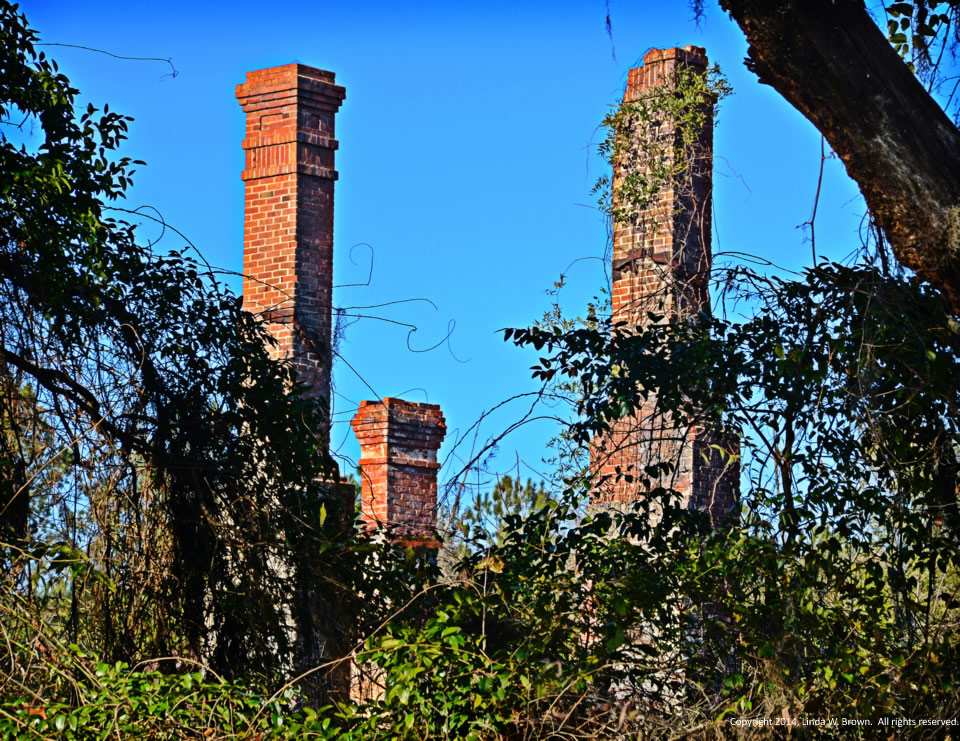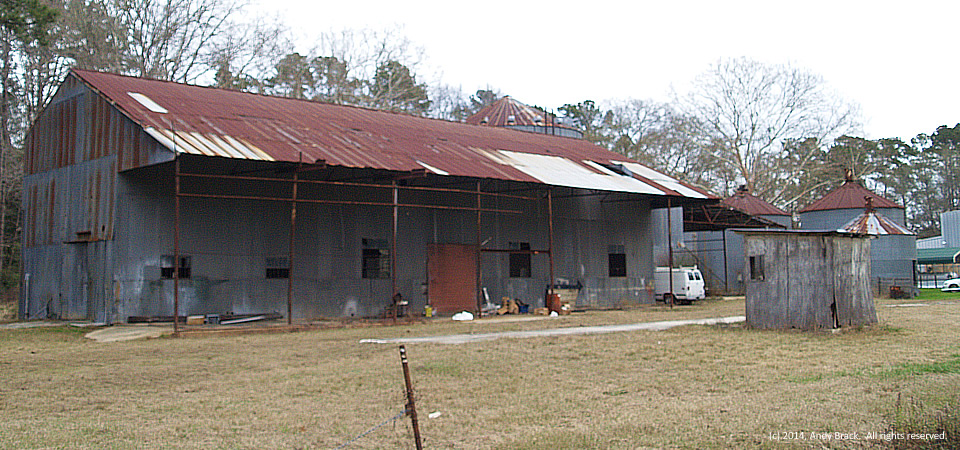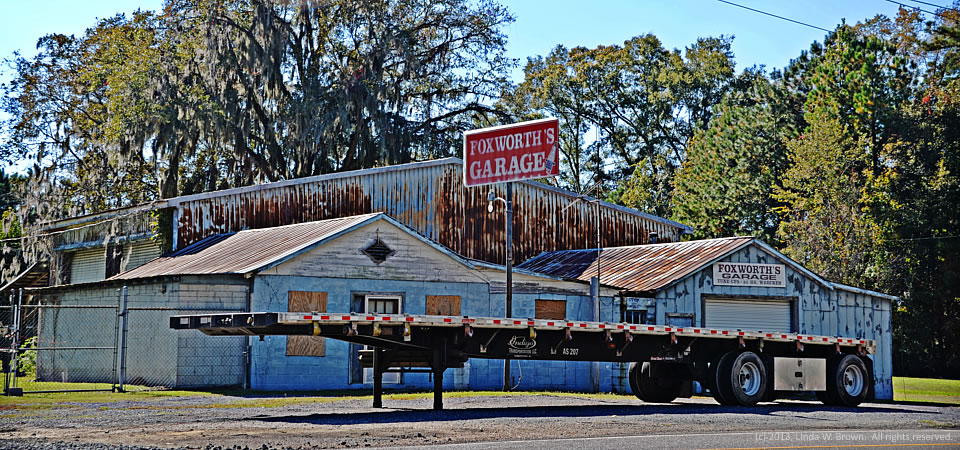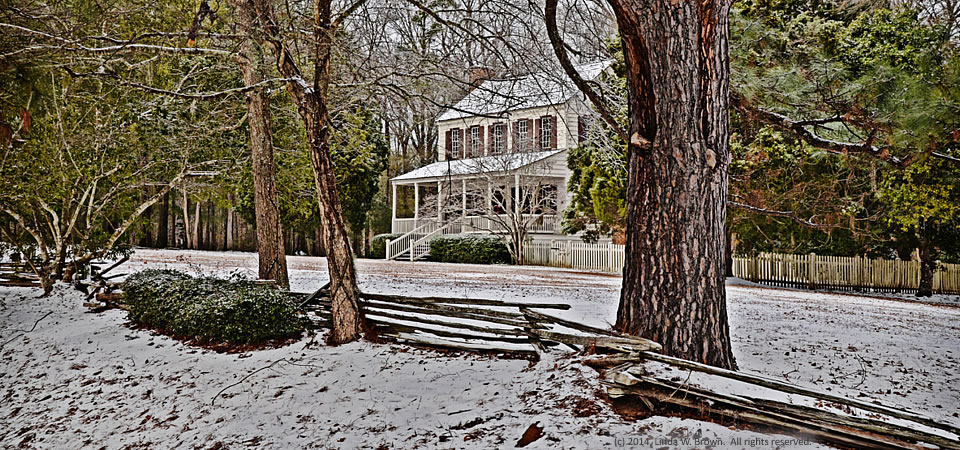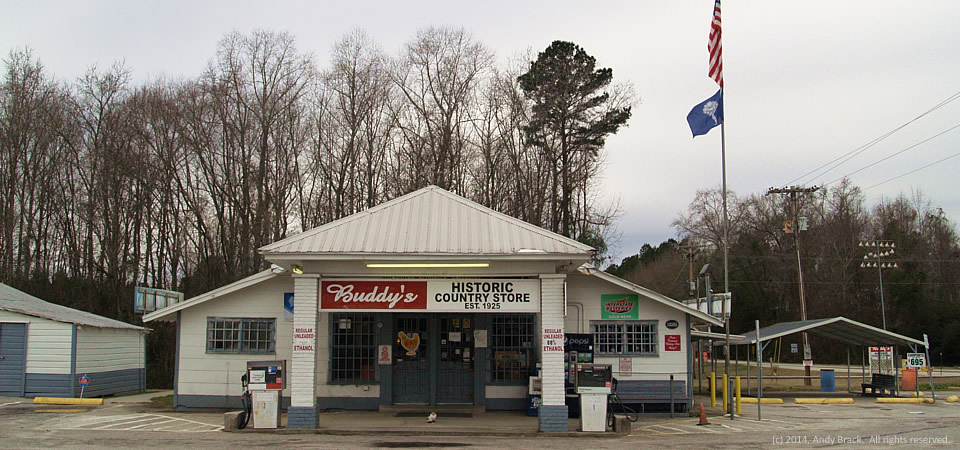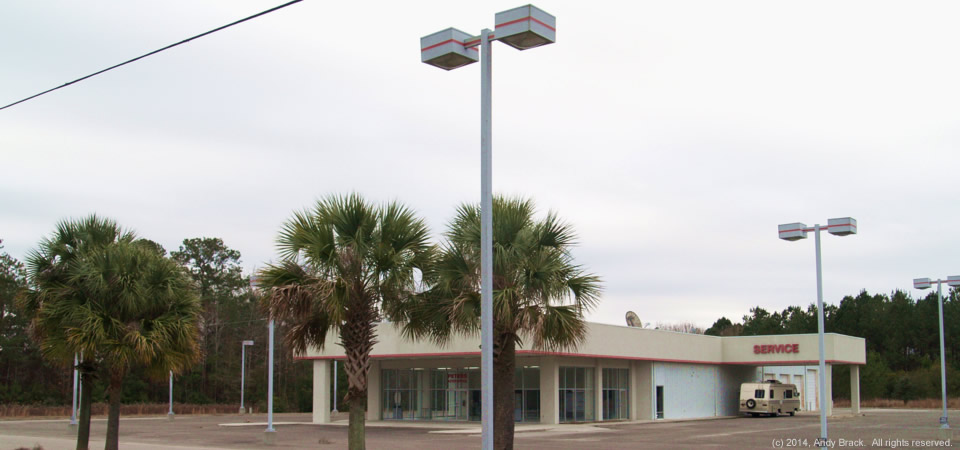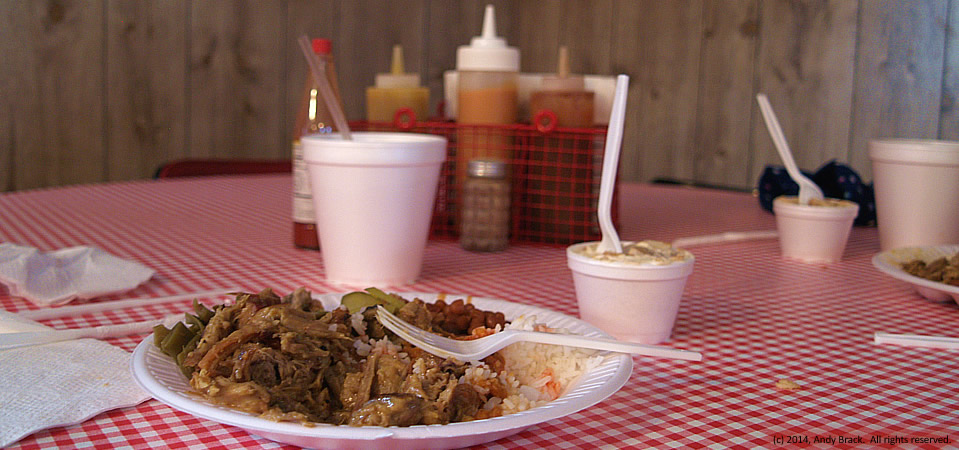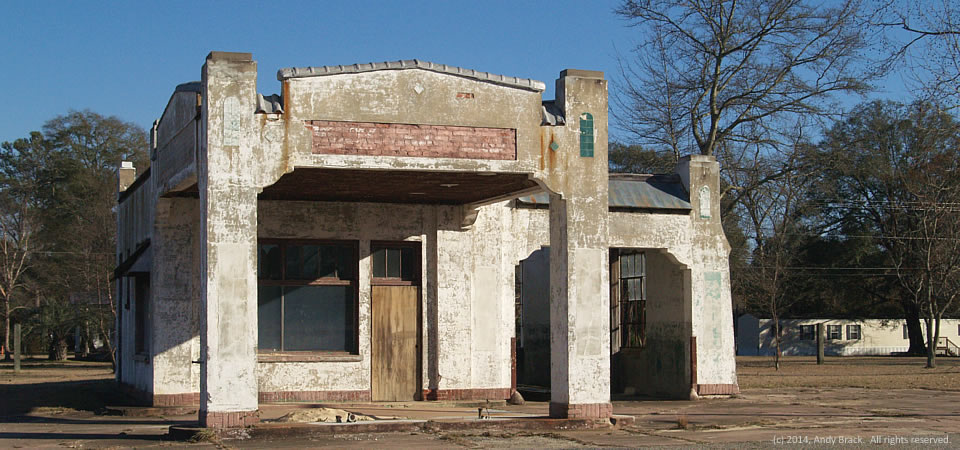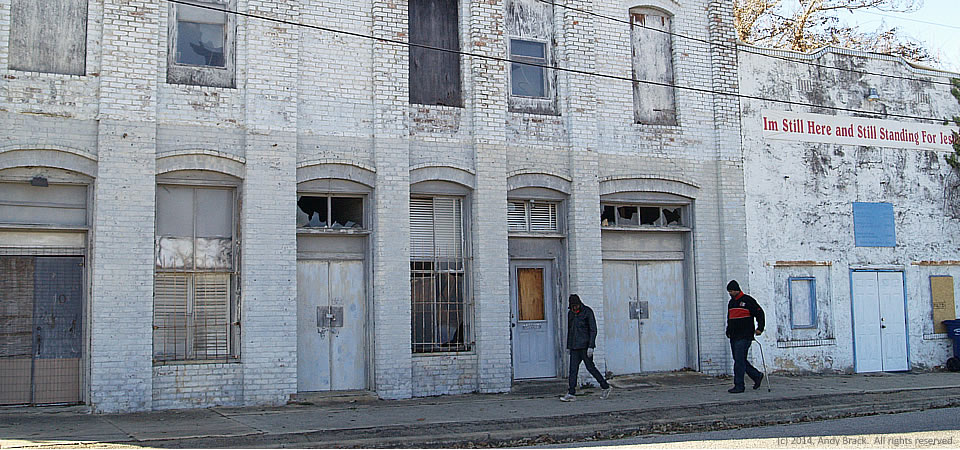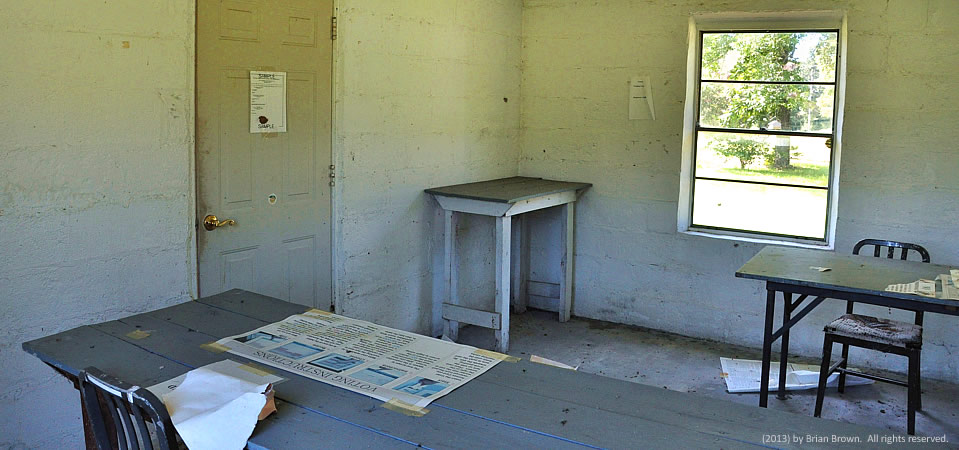
This is an old precinct house in the rural area of Minter, Ga., in Laurens County. Like many public structures in the area, it’s built of granitoid, writes VanishingSouthGeorgia.com photographer Brian Brown, who took the photo in August 2013. See another photo.
More than likely, this is the Oconee Voting Precinct on Minter Tweed Road. It’s probably still being used as a polling location as evidenced by the instructions for electronic voting on the table. Regardless, it’s certainly a relic of our rural past — a place that used to have wooden ballot boxes for paper ballots.
Laurens County, population 48,434, is in the middle of Georgia between Macon and Savannah on Interstate 16. Its county seat is Dublin, population 16,201. Thirty-six percent of Laurens County residents are black; 23.6 percent of the county’s residents live in poverty. Dublin, however, has a majority black population (57.6 percent) and 31.9 percent of residents live in poverty, according to Census data.
Photo by Brian Brown. All rights reserved.
